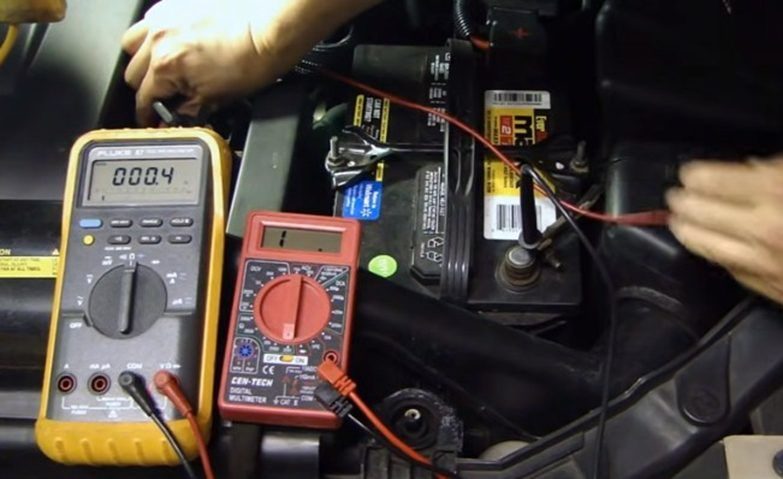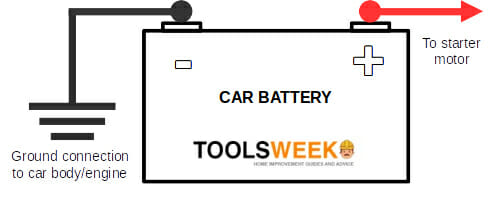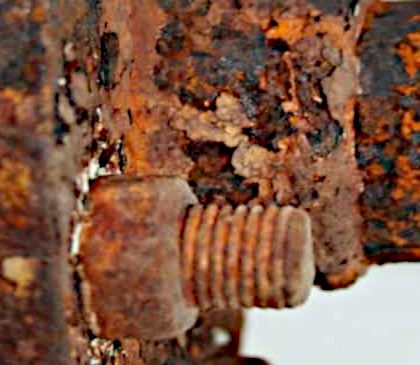Can a Bad Ground Cause a Car Not to Start?

A car can fail to start for various reasons, but is a bad ground connection a possible cause? and what can we do to fix it if it is? Let’s find out.
This article will help you to recognize the symptoms of a possible bad ground connection, confirm whether a bad ground connection is indeed to blame, and resolve the problem to get your car started again.
So, can a bad ground connection cause a car not to start? Yes, it can. The ground connection is critical for a car’s electrical system to function properly.
Below I will teach you to recognize the symptoms that indicate a bad ground connection and how to restore a good connection.
What is a Ground Connection?
First of all, what exactly is a ground connection? The ground connection in a car refers to the connection between its battery’s negative (-) terminal and the car’s body and engine. Although the main ground cable is normally black, you may find that a separate ground wire has been used to connect the negative terminal to the car’s chassis (body ground wire).

Maintaining a good ground connection is important because the electric circuit in a car is a closed-loop system. It flows from the battery’s positive (+) terminal to its negative (-) terminal, with all the car’s electronics connected to this loop. A continuous and uninterrupted flow of electricity is essential for all the car’s electronics to function normally.
What a Bad Ground Connection Does
When you have a bad ground connection, there is no longer a continuous and uninterrupted flow of electricity available for the car’s electronics. In this situation, the current searches for another return path to the battery ground. This disruption or diversity of the flow is often responsible for a host of electrical problems.
A bad ground connection does not normally drain the battery, but it can cause it not to charge properly and make the car give the wrong signals. It can cause hard starts, weakening or malfunctioning spark plugs (in a petrol/gasoline engine), or problems in the relay or heaters (in a diesel engine). A bad ground connection can affect a car’s entire electrical system, including its sensors and coils, and severe damage may require costly repairs.
Symptoms of a Bad Ground Connection
If you notice any of these symptoms, it could indicate a bad ground connection:
Electronic Glitches

An electronic glitch occurs when you notice, for example, the warning lights on your dashboard turn on for no apparent reason, or all the rear lamps turn on when you intended only one signal. Even if the car is switched off, a bad ground connection can cause a light to turn on. Anything unusual, abnormal, or erratic in the electronics indicates a glitch.
If you notice any glitches in your car’s electronics, it could be due to a bad ground connection, although there could be some other serious cause. If you notice a pattern in the glitch or a particular trouble code appears, it might give a clue to help you resolve the situation.
Flickering Headlights

Dim or flickering headlights are a visible symptom you notice when turning on the headlights. If they flicker or pulsate, it could be due to irregular alternator voltage.
Low Alternator Voltage
An alternator voltage is low when you get a reading much lower than its normal range of 14.2V-14.5V. You can only recognize this symptom after checking the alternator voltage.
Heavy Cranking
Heavy cranking occurs when the starter cranks upon turning the ignition to start your car. It’s a serious condition.
The Engine Misfires or Fails to Start
If your car’s engine misfires or fails to start, it could be due to a bad ground connection. This is a definite sign that something is wrong and the car needs further inspection.
Other Symptoms
Other symptoms of a bad ground connection include a sensor failing intermittently, the fuel pump repeatedly malfunctioning, difficulty in starting the car or the car not starting at all, ignition coil failure, the battery weakening too easily, radio noise, etc.
General Checks for a Bad Ground Connection
If you suspect there might be a bad ground connection preventing your car from starting properly, look for these things to fix the situation:
Check the Repaired Area
If you’ve had repair work done recently and bad ground connection symptoms only appeared after this, it should be your first place to check for the issues mentioned below.
Check for Loose Contacts
A connection can weaken or loosen due to continuous vibrations the car experiences or after having some mechanical work done. Look at the connections between the battery, the car’s body, and the engine, especially the nuts and screws. Tighten them if you notice any loose contacts, or replace them if their threads are damaged.
Check for Damage
Check for damaged cables, straps, wiring, and connectors. If you notice a cut or tear in a cable or strap, a damaged connector, or a broken wire lug, this might cause a bad ground connection.

Check for Rusty’s Contacts

All metallic contacts are prone to rust and corrosion. Usually, a car’s battery is protected by being placed high in an engine bay and by using protective caps on nuts and screws. However, these measures do not guarantee complete protection from rust or corrosion.
Look at the battery terminals for signs of corrosion. Look at the ground cables, straps, and wire lugs on their ends. All these points are usually located lower, where they are susceptible to contact with water and moisture, as well as dirt and mud.
Thorough Checks for a Bad Ground Connection

If the above general checks don’t lead you to identify the cause of the bad ground connection, get ready to conduct more thorough checks. You will need a multimeter for this.
First, locate your car’s electrical, chassis, engine, and transmission grounds. You may need to consult your car’s manual. We will check these grounds in the same order.
Before we begin, however, remember that when checking for ground connections, attach the terminals to some bare metal, i.e., a non-painted surface.
Check Electrical Grounds
Test the electrical grounds by connecting a remote starter switch to the battery’s positive (+) terminal and its other end to the ‘s’ terminal of the starter solenoid (or the starter relay, depending on your car).
Check Chassis Grounds
Chassis ground checks identify resistances in the car’s chassis used as common ground by electrical components. Here are the steps:
Step 1: Disable Ignition
Disable the ignition (or fuel system), so the engine does not accidentally start while doing this test.
Step 2: Set Transmission
Set the gear/transmission to the neutral position (or parking if automatic).
Step 3: Connect the Multimeter’s Leads
Set the multimeter to DC. Connect its black lead to the battery’s negative (-) terminal, and its red lead to any clean spot on the chassis, such as a bolt or cylinder head.
Step 4: Crank The Engine
Crank the engine for a few seconds to obtain a reading. You may need an assistant to do the cranking while you check the reading. It should be no more than 0.2 volts. If the multimeter shows a higher reading, it indicates some resistance. In this case, you will need to test the chassis grounds further.
Step 5: Change the Lead’s Connection.
Disconnect the red lead from the current point on the chassis to another point as the main ground terminal.
Step 6: Enable Ignition
Start the car’s ignition (or fuel system), start the engine, and let it run idle.
Step 7: Turn on an Electrical Component
Turn on a major electrical component, such as your car’s headlights, auxiliary lamps, wipers, or heat blower.
Step 8: Reconnect the Multimeter’s Leads
Disconnect the red lead from wherever it is connected on the chassis to the car’s firewall and recheck the multimeter reading.
It should be equal to or under 0.2 volts. You may need to repeat this step for different points until you notice a higher voltage in one spot and a voltage drop in another. If this happens, the high resistance spot will be between the last two points where you connected the red lead. Look for loose or broken wires and connectors in this area.
Check Engine Grounds
Test the engine grounds by taking a voltage drop reading to identify any resistance in the return path. Here are the steps:
Step 1: Disable the Ignition
Disable the ignition (or fuel system), so the engine does not accidentally start while doing this test. Either disconnect and ground the cable from the distributor cap, e.g., to an engine bracket/bolt using a jumper wire, or remove the fuel pump fuse. Check your car’s manual to know where the fuse is located.
Step 2: Set the Multimeter to DC
Switch your multimeter to DC volts and set a range that covers but exceeds the battery’s voltage.
Step 3: Connect the Multimeter’s Leads
Connect the multimeter’s black lead to the battery’s negative (-) point, and its red lead to any clean surface on your engine.
Step 4: Crank The Engine
Crank the engine for a few seconds to obtain a reading. You may need an assistant to do the cranking while you check the reading. The reading should be no more than 0.2 volts. If the multimeter shows a higher reading, it indicates some resistance. In this case, you will need to test the engine grounds further.
Step 5: Change the Lead’s Connection
Disconnect the red lead from the engine’s surface to the engine’s end side as the main ground terminal.
Step 6: Crank The Engine
Crank the car’s engine once more to take another voltage reading.
Step 7: Repeat the Last Two Steps
Repeat the last two steps, as necessary, by reconnecting the multimeter’s red lead to different points on the engine until you get a reading of no more than 0.2 volts. If you notice a voltage drop, the high resistance spot will be between the current and the last point where you connected the red lead. Look for loose or broken wires, or signs of corrosion, in this area.
Check Transmission Grounds
Test the transmission grounds by taking a voltage drop reading to identify any resistances in the return path.
As in the previous ground tests, check for voltage drops between the car battery’s negative terminal and points on the transmission case. The voltage should be 0.2 volts or less as before. If you notice a voltage drop, you will need to check between those two points connected by the red lead for any kind of damage like you did before. You may need to remove rust, paint, or grease. If you see any damaged ground straps, replace them. Finish off by cleaning all transmission grounds. (1)
Wrapping Up
Suppose you notice any of the symptoms mentioned in this article, especially if they happen frequently or if several of them happen together. In that case, your car’s ground connection may be bad. The things to look for (e.g., loose contacts, damage, and rusty contacts) will confirm if this is the case. If confirmed, you should resolve the problem to avoid potential negative effects.
Check all the ground connections by tracing the negative terminal of the car’s battery to where it connects with the car’s body and from there to its engine. If you notice electronic glitches, check all peripheral ground connections, including the connectors in the engine bay or wherever else they are located.
Maintaining a good ground connection is essential to prevent the problems associated with a bad connection and to ensure you can always start your car smoothly. (2)
Take a look at some of our related articles below.
- How to connect ground wires together
- How to test a low-voltage transformer
- How to use a Cen-Tech digital multimeter to check voltage
References
(1) paint – https://www.elledecor.com/home-remodeling-renovating/home-renovation/advice/a2777/different-types-paint-finishes/
(2) bad connection – https://lifehacker.com/top-10-ways-to-deal-with-a-slow-internet-connection-514138634
